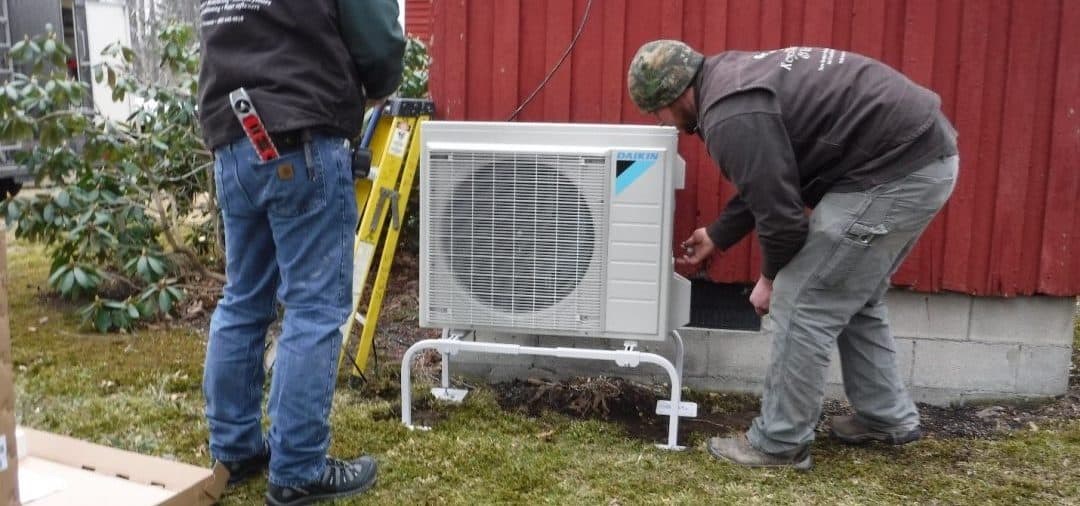Heating and cooling can account for over half of a household’s energy needs. With fuel costs rising every year, Vermonters are looking for an efficient alternative to staying cool in the summer and warm in the winter. Recent advances in technology have provided an attractive new option: cold-climate heat pumps. Though the name suggests heating, cold-climate heat pumps can be used year round to provide heating and cooling as needed, with just one system.
A cold climate heat pump is a highly efficient heating and cooling system that makes use of the same technology found in a refrigerator. They have three components: a compressor located outside the home, and an evaporator and a remote control unit inside the home. They do not require duct work to operate. Installation involves coring a three-inch opening in an exterior wall and connecting the inside and outside units, plus constructing a small pad to support the outside unit. The units are powered by electricity; they are not using the electricity to create heat, but rather to transfer latent thermal energy from outdoors to your indoor living space.
How do they work? In the cooling mode they work like your refrigerator cooling the air and blowing this cooled air into the spaces it affects. Cold-climate heat pumps make use of that energy to cool your home by transferring the energy from the outside air to the air inside your house using the compressor and evaporator. Although they are relatively new around here, they have been used to efficiently cool homes in Europe, Asia and Australia for decades.
The three key benefits of cooling your home with a cold-climate heat pump are increased comfort, increased control over your energy use, and the cost savings you can expect from decreasing your electric bills if you are currently using window air conditioning units. Heat pumps work best in homes that are not leaky and have a tight, well defined thermal shell. The heat pumps or mini splits, as they are referred to work best in homes with open spaces that exceed 750 square feet have a unencumbered air flow.
Other benefits of cold climate heat pumps are that they dehumidify the air in your home, so even if you don’t want A/C, they can help solve moisture problems. Because a variable-speed fan is moving air through the inside unit all the time, the heat pump also functions as a whole-house ventilator. If you already have an air-tight house, installing a heat pump can be an excellent second phase energy efficiency measure. In many cases it is sensible to offset the increased electricity use by installing solar photovoltaic panels for a truly renewable heating and cooling system.
A number of HVAC specialists in the area are refrigerant certified and can install a cold-climate heat pump in your home. Energy advisor Ken Welch can help you determine if you might qualify for incentives and can help you find an eligible contractor. You can find representatives from all three organizations at the Energy Innovation Center on Merchants Row in downtown Rutland.

